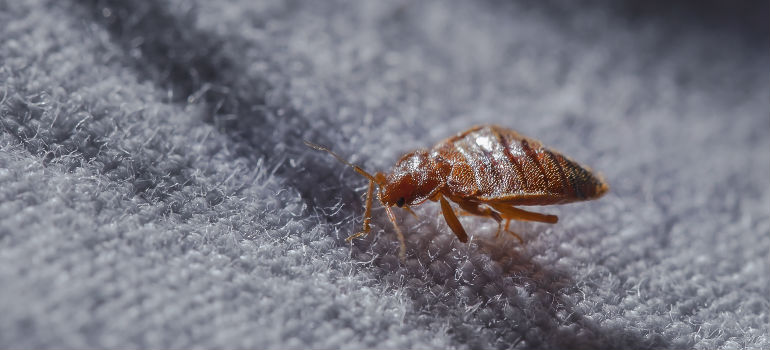
You peacefully lay on your bed, just minding your own business… when suddenly, you feel something crawling up your left forearm. You immediately bolt off the bed, convinced that you’ve just had an unpleasantly close first encounter with a bed bug.
But was this really the case?
For all you know, you may have been visited by a bug that looks like a bed bug, but isn’t! Below, we will examine 7 insects that look like bed bugs and whether or not they are just as unpleasant to keep around your home (spoiler alert: they are). Let’s dive right in!
Table of Contents
First Things First – Check the Bite
If you suspect that you have been bitten by a bedbug, check your arms, legs, and torso for mosquito-like marks arranged in a line. If you notice any and you have a pet, take it to the vet first to eliminate the possibility of a flea infestation since they leave similar bites.
Typically, bed bug bites vanish in a few days, and many people will not immediately feel the urge to scratch them, so make sure to also check your sheets for tiny blood spots.
However, if you happen to be allergic to the protein released by the bugs during feeding, you may also develop red weals that will usually itch terribly for about a week before subsiding.
Read more about the difference between flea and bed bug bites.
Are you dealing with a pest infestation? You don't have to be alone in the battle against pests. Hire a professional pest expert!
What Does a Bed Bug Look Like?
Are bed bugs visible to the naked eye? With just ⅕ of an inch in size, bed bugs are near-invisible, nocturnal creatures with a reddish-brown appearance. They have a flat and oval body which is almost completely transparent, as well as a set of protruding red eyes and short, thick antennae.
They also seem to have a pair of wing-like appendages, which thankfully serve a purely cosmetic function. Now that you know what a bed bug looks like, it’s time to expose the 7 most widespread bugs that look like bed bugs
Read more about bed bugs.
Bugs that Look Like Bed Bugs
The spider beetle
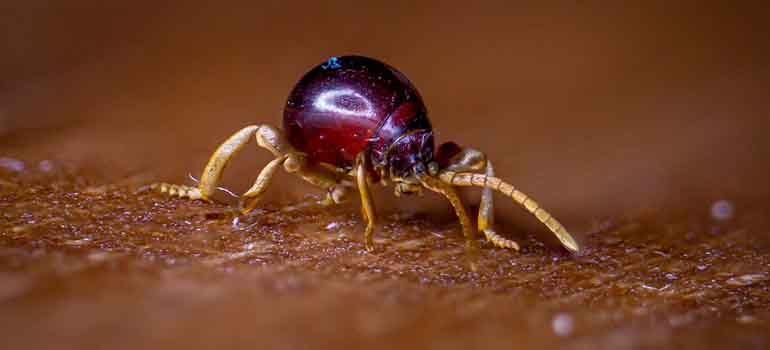
Even smaller than bed bugs (1/7th of an inch) spider beetles are similar to them in that they:
- Are oval and reddish-brown in appearance;
- Like hiding in secluded and dark areas;
- Only come out to feed at night.
It’s easy, then, to see how someone could mistake one for the other. However, what distinguishes the spider beetles from the bed bug is their shiny and humpbacked body. If this is the bug that crawled on you on that fateful night, fear not. These beetles rely on your wheat, rice, barley, and other food grains for their survival and will not bite humans under any circumstances, so their presence in your bedroom was purely coincidental.
The cockroach nymph

While roaches do look reddish-brown during their nymph stage, this is where all similarities with their distant bed bug cousins end. They are cylindrically shaped in appearance as opposed to bed bugs whose bodies closely resemble apple seeds.
Roaches are also notable for hiding in impossibly tight cracks and crevices that provide just enough warmth and moisture for them to survive.
While they generally run at first sight of danger and do not bite humans, their mere presence can trigger asthma and spread dangerous diseases, so you should immediately call a cockroach pest control specialist if you’ve spotted any crawling about.
The book louse
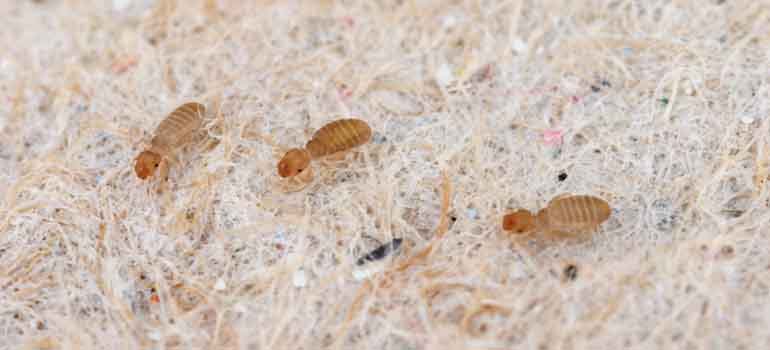
Also known as psocids, these insects are strikingly similar to bed bugs in their “baby” (nymph) stage. They come in a wide range of colours, from translucent white to grey and brown, and can often be spotted under wallpapers or near the edges of windows and windowsills.
The good news is that they do not snack on human blood but on mould, pollen and other fungi, as well as on (don’t read this if you’re eating) dead insects. They also do not transmit any known diseases, although you should probably take action if you start seeing them too often.
What if it is actually a bed bug?! Bed bugs are hard to get rid of. Don't rely on DIY solutions, book a professional bed bug control service.
The carpet beetle
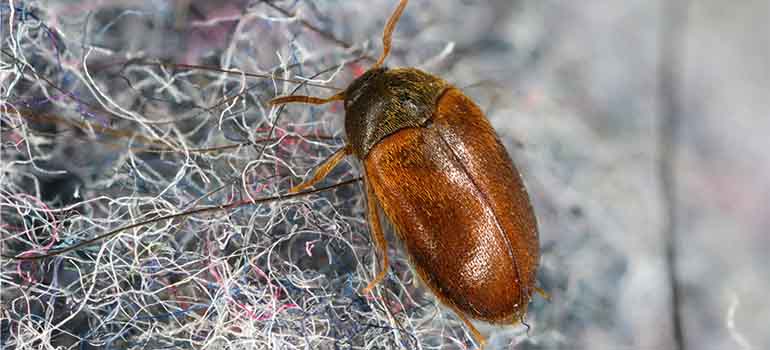
Out of all the bed bug look alikes on this list, the carpet beetle resembles them the least if you don’t count their antennae and hard exoskeletons. Their bodies are dyed in dark brown or black and are covered with tiny hairs. Carpet beetle larvae, in particular, have a very “hairy” appearance.
That’s great and all, but do they bite humans? Fortunately, they do not. Instead, they stick to a strict animal fibre diet, feeding on the keratin proteins found within the organic fabric, furniture, carpeting, and clothing.
Needless to say, a carpet beetle infestation, while not as bad as a bed bug one, can ruin your wardrobe almost overnight. Some people are also highly allergic to their tiny hairs.
The flea

Fleas are just ⅛ inches big, making them appear as tiny jumping black dots. With black to reddish-brown bodies, oval and flat shapes, and a lack of wings, there are almost no similarities to be drawn between them and bed bugs.
Except for one disturbing feature – their insatiable appetite for blood.
Granted, most fleas will only feed on canine and feline hosts and will only rarely resort to biting humans. However, their bite mark patterns can at times, look almost identical to that of bed bugs, so before calling an exterminatort, check your pet for fleas first.
The bat bug
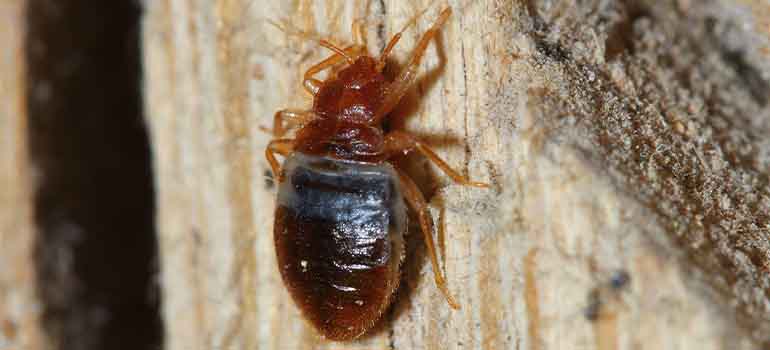
In the academic fields, this insect also goes by the name of Cimex pilosellus. Their interesting name is derived from their main activity, which is living next to bat nests and using the animals as hosts. In human environments, they will usually inhabit attics where bats are present but may also venture into human-only territory if the bats are either exterminated or chased away.
Here is the kicker, though – bat bugs are essentially indistinguishable from bed bugs without the proper equipment! So, how do you know it’s not bed bugs? To identify the bug, you would have to catch a sample and call an entomologist, who will then observe the insect under a microscope to check if it has:
- An oval-shaped body;
- Long fringe hairs just below their head.
If those descriptions match the bug in your jar, then you have a bat bug infestation on your hands. However, unlike bed bugs, they cannot survive for months on end without a blood host, so leaving the property for a few weeks and then coming back should do the trick.
The tick

These tiny creatures are reddish-brown in appearance and have 8 long legs, which make them look like miniature tarantulas when examined under a microscope. Unlike tarantulas, however, they lead their parasitic existence by sucking the blood of mammals and birds.
During their feeding time, ticks can transmit a range of dangerous diseases, which is not something that can be said for bed bugs. Ticks also cling to their hosts until they are fully fed, so you should immediately visit a hospital if you discover this parasite anywhere on your body!
So, to recap – bed bugs are transparent, blood-sucking creatures. They usually leave welts or mosquito-like bite marks that are often arranged in a line. They prefer to hide in narrow cracks and crevices (usually under mattresses) and come out to feed only at night.
These insects are incredibly resilient to homemade treatments, and their prolonged presence often leads to severe anxiety and depression. So, if you happen to see a bug around your bed, always make sure to trap it in a plastic or other container and submit it for expert analysis!
Check also:
If the specialist confirms that you have a bed bug infestation, you will need to:
- Dispose of all infested items or wash them on a high-temperature setting;
- Call a certified pest controller to treat the infested area with suitable insecticides.
Hopefully, by now, you have learned to identify bed bugs and their clones and will be able to take appropriate action to finally enjoy a good night’s sleep. And if you need any further help, just ask – the Fantastic Pest Control team is always standing by to assist you!
Source: Akos Nagy/shutterstock.com
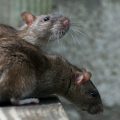
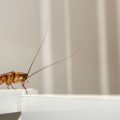


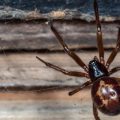
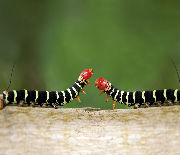
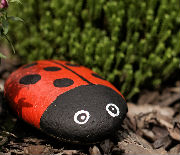
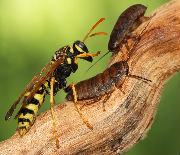
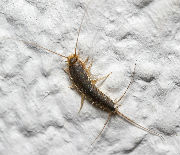
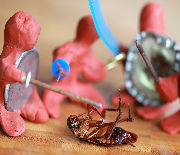
Whats in the picture?